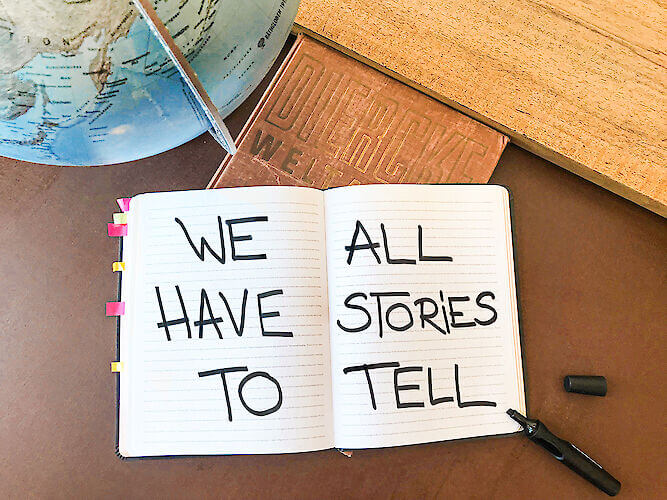Why are stories so powerful in the classroom?

If you have attended one of our masterclasses about the power of stories, then hopefully you already know the answer to this question. If you haven’t, then you really should!
We highly recommend Jonathan Gottschall’s book, “The Storytelling Animal: How Stories Make Us Human” as his exploration of the power of stories in our lives and in fiction is a compelling read. It reminds us how we go about our lives narrating stories and framing our experience. It is what makes us human, and it is often what connects us as humans.
It is this connection that we seek when we bring stories into the English language classroom.
To begin with, stories about yourself are the quickest way to appear human and to engage your students’ attention. We may feel that as teachers we are required to maintain a “mask” at all times and outwardly project our teacher persona. This can come from our experience of how we were taught or the idea that to do otherwise is unprofessional. However, students are generally interested and curious about us as human beings and our life outside the classroom. Using a story from your life to introduce a new topic can capture their attention before they even realise that it is connected to what they are about to learn. It is far more engaging and memorable than saying “let us turn to page 22”!
There is also huge opportunity in allowing students to tell you their stories and to paying close attention to what they say. We can learn so much about them and what motivates them, and this will in turn help in deciding what materials to use and how to cover certain topics.
At our summer camps at UKLC for many years we had a monster activity for the young learners. They had to design and create a monster. They had to draw him, describe him in detail, imagine his habitat, his food, his daily routine and his story. The activity was amended based on the level, but we were always amazed at the creativity that came out in those first few days. Instead of using the first phrases we always cover for introductions and learning about people by saying “Hi, my name is Pablo and I live in Spain”, they were introducing their creations and using all the same language (and much more colourful vocabulary) to tell the story of their monster. The monsters and their stories ran as themes through future lessons and the drawings remained on the walls for weeks.
Whether it is revealing some of your story, learning your students’ stories or letting their imaginations run wild as they create stories, make sure you unleash the power of stories in your classroom.